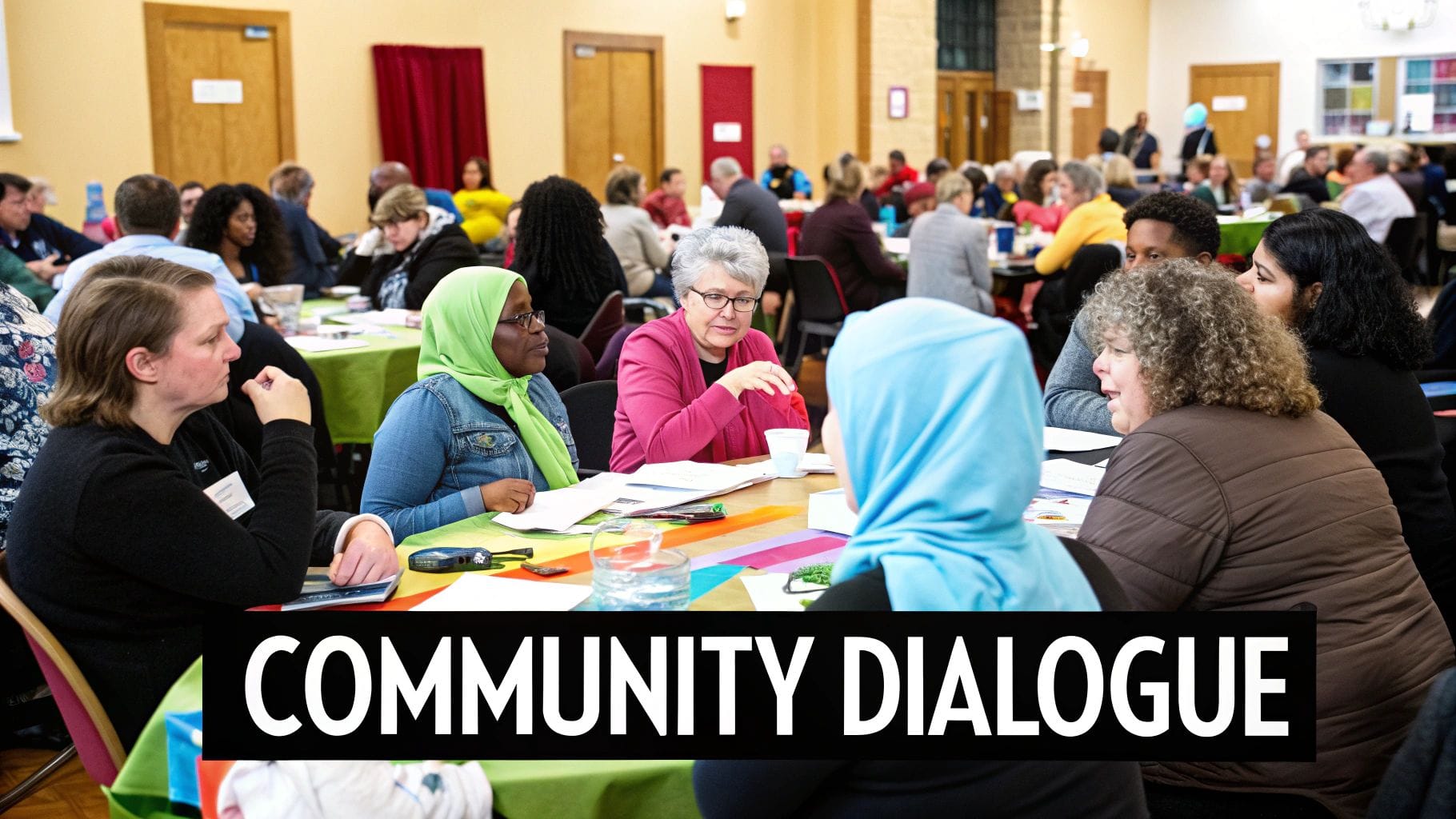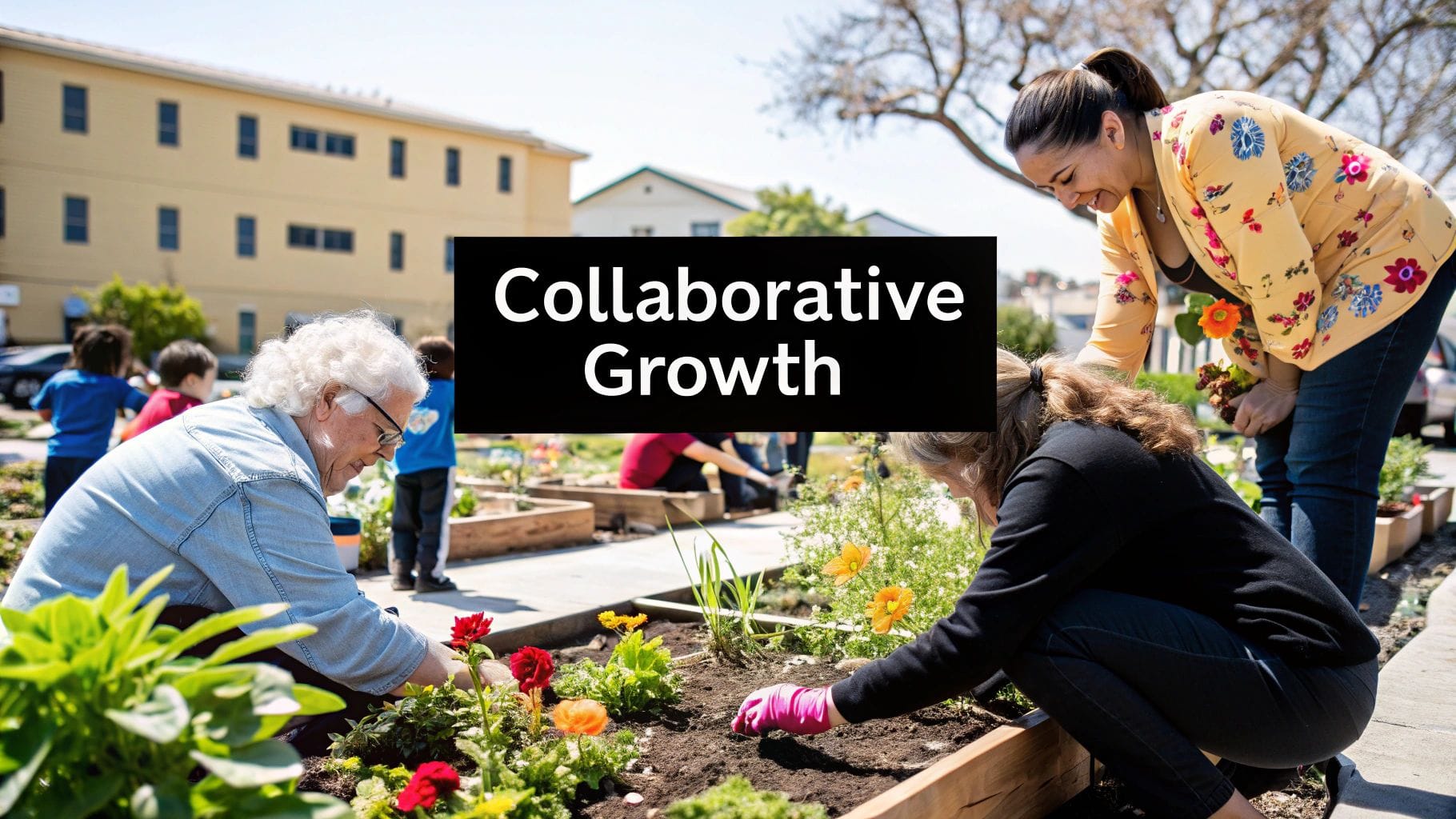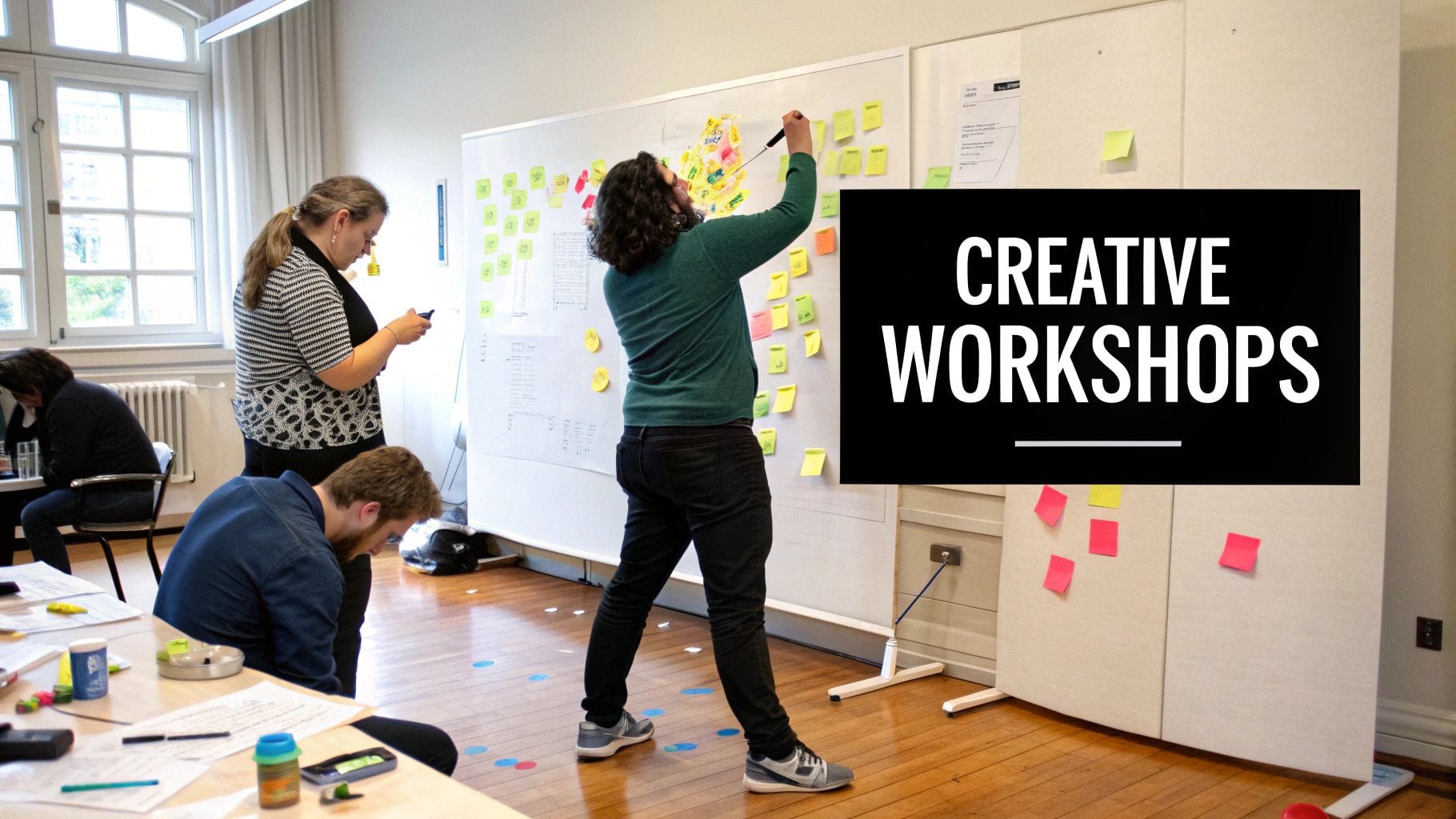Essential Community Engagement Best Practices: A Strategic Guide for Building Stronger Connections
Essential Community Engagement Best Practices: A Strategic Guide for Building Stronger Connections
Understanding the Foundations of Effective Community Engagement

True community engagement goes far beyond sending newsletters or hosting occasional events. At its core, it's about building real, lasting relationships founded on trust and mutual understanding. By moving past surface-level outreach and embracing proven engagement practices, organizations can foster genuine connections with their communities. Taking time to understand your community's specific needs and priorities allows you to shape engagement approaches that truly resonate.
The Importance of Trust and Consistent Interaction
Just like any relationship, trust develops gradually through regular, positive interactions over time. Brief, impersonal outreach rarely creates the deep connections needed for an active community. Instead, focus on frequent small-scale activities that open up real dialogue and strengthen relationships.
Small but meaningful engagement opportunities like neighborhood beautification contests, community garden gatherings, or collaborative cookbook projects help build trust naturally. These activities give residents chances to participate in ways that directly affect their daily lives while connecting with neighbors. When people feel their voices matter, they're more likely to get involved in bigger initiatives. You can learn more engagement tips here: Govocal Blog
Turning Participants into Advocates
The ultimate goal is cultivating community advocates - people who actively participate and feel passionate about supporting your mission. This shift from passive participant to engaged advocate often happens when individuals feel genuinely valued and connected. Building this type of engaged community takes thoughtful planning and care. For more insights on nurturing community, check out: A Complete Guide on What Is Community Management
Overcoming Engagement Barriers
Common obstacles like lack of awareness, time constraints, and accessibility issues can limit community participation. For example, offering both online and offline ways to get involved helps more people participate on their own terms. Being proactive about identifying and addressing these barriers creates a more welcoming environment for everyone.
By focusing on trust-building, consistent interaction, and removing participation barriers, organizations can establish the foundation for meaningful community engagement. This approach helps transform occasional participants into passionate advocates who advance shared community goals.
Crafting Targeted Outreach Strategies That Actually Work
Good community engagement requires a focused approach that goes beyond just sending out generic messages. By understanding your audience, crafting relevant messages, and choosing the right channels, you can build meaningful connections and drive real participation. Here's how to create outreach strategies that deliver results.
Identifying Key Stakeholders and Crafting Resonant Messages
The foundation of effective outreach is knowing your key stakeholders - the people and groups most invested in or affected by your initiative. For a community garden project, these might include local residents, gardening enthusiasts, and nearby businesses.
Once you know who you're trying to reach, craft messages that speak directly to what matters to them. Different groups have different priorities - environmentally-conscious residents might care about sustainability benefits, while others may be more interested in connecting with neighbors. Your messages should reflect these varied interests.
Selecting Effective Communication Channels
Picking the right communication channels can make or break your outreach efforts. Different audiences prefer different channels - younger people tend to engage more on social media, while older residents might better respond to email newsletters or local papers. You might be interested in: How to master community engagement activities
Consider using multiple channels together for maximum impact. A community garden project could benefit from social media posts, flyers in local shops, and announcements at community events to reach the widest possible audience.
The power of targeted outreach is clear from real examples. Portland General Electric aimed for an ambitious 66% participation rate in their Smart Grid project, far above the typical 5-10% national average. They achieved this through careful surveying and partnerships, gathering 4,919 responses with an 8.5% resident response rate. This highlighted how ongoing education drives engagement. Find more details here: PGE Smart Grid Proposal
Building Momentum Through Early Wins and Adapting to Feedback
Starting small with achievable goals helps build enthusiasm and participation. For a community garden, this could mean hosting an initial meet-and-greet event or starting with a small pilot group of gardeners.
Regular feedback from your community is essential for fine-tuning your approach. Use surveys, focus groups, and online feedback to understand what's working and what needs adjustment. This ongoing dialogue builds trust and helps create stronger community bonds over time.
Measuring Success Through Data-Driven Insights

When it comes to community engagement, numbers alone don't tell the full story. While counting participants matters, understanding how deeply people engage and what lasting changes occur is essential. Taking a data-driven approach helps organizations fine-tune their strategies and create meaningful impact.
Establishing Baseline Metrics and Setting Achievable Goals
Starting with baseline metrics gives you a clear reference point for measuring progress. For example, if you want to boost event attendance, first track your current average turnout. This foundation makes it possible to demonstrate real growth and improvement.
Next, develop goals that push you forward while remaining realistic. Follow the SMART framework - make goals Specific, Measurable, Achievable, Relevant and Time-bound. Rather than a vague target like "get more people involved," aim for something concrete like "increase event attendance by 20% within six months."
Choosing the Right Measurement Tools
Your measurement approach should align with your specific objectives. For online initiatives, web analytics can track engagement through metrics like page views, time on site, and social sharing. In-person programs benefit from tools like surveys, feedback forms, and attendance tracking.
Don't overlook qualitative data like community feedback and personal stories. While harder to quantify, these insights reveal how your work impacts individual lives and the broader community in meaningful ways.
Analyzing Data and Refining Strategies
Collecting data is just the first step. The real value comes from analyzing what the numbers and feedback tell you. Are you reaching your target audience? Do participants find the activities worthwhile and engaging?
Key Performance Indicators (KPIs) play a vital role in tracking community engagement. For instance, you might monitor the number of engagement touchpoints, variety of participation options, and different outreach methods used. As an example, one mobility planning project used multiple engagement phases and regular reporting to assess both reach (webpage visits) and depth of involvement (survey completion rates). Data protection, such as GDPR compliance, remains essential throughout.
Use these insights to continuously improve your approach. If certain communication channels underperform, test new methods. If participants drop off at specific points, investigate why. This ongoing refinement ensures your engagement practices evolve to serve community needs effectively.
Maximizing Local Impact for Greater Community Buy-In
Getting residents deeply involved in community initiatives starts with making those initiatives personally meaningful to them. Research shows that when broader programs connect directly to neighborhood-level concerns, participation increases significantly. The key is presenting projects in ways that resonate with residents' daily experiences.
Tapping into Local Priorities
Begin by discovering what matters most to people in your specific area. Whether it's better parks, safer streets, or support for local shops, understanding these hyperlocal priorities helps you craft messages that show how your work addresses real neighborhood needs. For example, you could present a city sustainability project through the lens of improving air quality on specific blocks where families live and play.
Framing Initiatives for Local Impact
People engage more when they see how a project affects their immediate surroundings. Instead of talking about overarching plans, focus on specific benefits like making neighborhoods more walkable, healthy, and livable. Recent studies found that participation jumps when residents understand exactly how a project will change their street or daily routine. Targeting communications to specific areas leads to higher engagement since people care most about what's happening close to home. Learn more: Three Community Engagement Strategies to Increase Public Participation
Building Neighborhood-Level Momentum
After identifying local concerns, focus on building energy block by block. Small, neighborhood-based activities like block parties tied to community projects, local feedback sessions, or dedicated online spaces for discussing nearby issues can create shared purpose and boost involvement.
Creating Engagement Programs Residents Want to Join
The best community programs emerge from true partnership with residents rather than top-down planning. Get input early and often to understand preferences and shape activities accordingly. Provide multiple ways to participate - from online surveys to in-person workshops - so everyone can join in their preferred way. Explore helpful tools here: The Best Community Management Tools. When residents help create programs, they develop trust and ownership in outcomes that benefit their community.
Through these approaches, you can help turn residents into active participants who feel invested in your community's success. The result? Stronger relationships, higher engagement, and more effective initiatives that create lasting positive change.
Making the Most of Digital Tools for Community Building

Digital tools offer new ways to bring communities together, but success requires thoughtful planning and execution. Let's explore how to select platforms, create engaging online experiences, and build inclusive spaces that encourage active participation from all members.
Finding the Right Digital Platforms
The best platform choices depend on your specific community. For instance, younger members may prefer Instagram and TikTok, while older participants often engage more on Facebook or through email newsletters.
Here are key platforms to consider:
- Social Media: Use Facebook, Twitter and Instagram for updates, polls and discussions
- Discussion Forums: Create dedicated spaces for in-depth conversations on specific topics
- Virtual Meeting Tools: Platforms like Zoom and Microsoft Teams enable interactive online gatherings
- Email Marketing: Send important updates and personalized content directly to members. Learn more about creating WhatsApp communities.
When evaluating platforms, prioritize accessibility. Look for user-friendly interfaces that work well for people with disabilities and offer features like language translation.
Finding the Right Mix of Online and In-Person
While digital tools are valuable, face-to-face connection remains important. Consider blending online and offline activities - for example, hosting a virtual town hall followed by smaller in-person meet-ups. This creates multiple ways for people to engage based on their preferences and comfort levels.
Crafting Engaging Virtual Experiences
Moving events online requires active design for engagement:
- Interactive Town Halls: Include Q&As, polls and chat features to keep participants involved
- Dynamic Webinars: Use visuals, breakout rooms and participant interaction opportunities
- Discussion Forums: Start conversations with thought-provoking questions and stay engaged with responses
Running Effective Social Media
Social media needs strategic attention. Focus on two-way conversation rather than just broadcasting messages. Plan content in advance with an editorial calendar. Pay attention to both positive and critical feedback to improve your approach over time.
Building Inclusive Online Spaces
Digital engagement should welcome everyone. Offer multiple participation options that work for different learning styles and tech comfort levels. Provide clear instructions and support. Follow accessibility guidelines. Making inclusivity a priority creates a better experience for the whole community.
Building Sustainable Long-Term Community Engagement

Creating strong, lasting community engagement takes more than just running occasional activities. The key is developing thoughtful programs designed for the long haul - ones that can adapt and grow over time. This means starting with fundamentals, forging real connections, and always being ready to evolve as community needs change.
Developing Community Ambassadors
One proven strategy is identifying and supporting community ambassadors - passionate members who naturally promote your mission to others. These trusted voices help extend your reach and deepen bonds within different parts of your community. Look for potential ambassadors in your existing programs or spot them through their consistent enthusiasm and dedication. Give them the tools and backing they need to increase their positive impact.
Establishing Effective Feedback Loops
Getting regular input from your community is essential - but just as important is showing how that feedback shapes what you do. When people see their suggestions leading to real changes, they feel truly heard. Mix formal methods like surveys and focus groups with casual conversations and social media discussions. For more insights, check out our guide on tips to improve community management. This varied approach helps you fine-tune your strategies based on what matters most to your community.
Creating Programs That Endure
Think of community engagement like tending a garden - you need smart planning, consistent care, and occasional pruning for healthy growth. This means using resources wisely through effective volunteer management and building partnerships with other organizations to share resources and broaden your impact.
Adapting to Changing Needs
Communities naturally evolve, and what works perfectly today may need adjustments tomorrow. Stay flexible by regularly checking how well your programs resonate and be ready to modify them or start new ones based on current community priorities and feedback.
Delivering Meaningful Results for All Stakeholders
Successful community engagement creates real value for everyone involved. Set clear benefits both for your organization and the community you serve. For example, a community garden gives residents fresh food while building neighborhood connections and improving local spaces. When everyone sees concrete benefits, it strengthens relationships and builds shared investment in positive outcomes.
Want to nurture your community and keep them engaged? Inagiffy offers end-to-end newsletter services, handling everything from content creation to technical optimization, guaranteeing readership and revenue growth. Learn more at inagiffy.news.